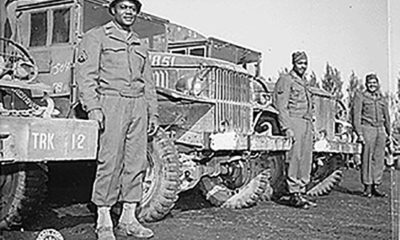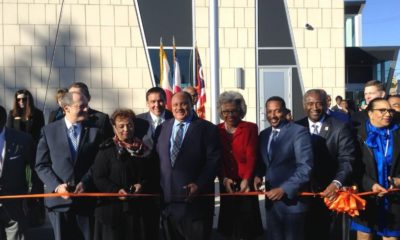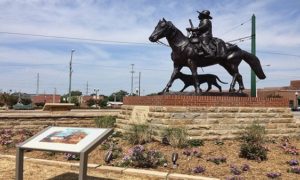Culture
Muslim Americans: Beyond the Stereotypes
 By Dr. Edward E. Curtis, IV.
By Dr. Edward E. Curtis, IV.
There are approximately three to six million Muslims in the United States. Though they are sometimes seen in the United States as recent and foreign additions to the country, they have been part of the United States since its founding as a nation. Their contributions to American culture have been profound. As President Barack Obama, himself the son of an African Muslim, has noted, Muslim Americans “have fought in our wars, they have served in our government, they have stood for civil rights, they have started businesses, they have taught at our universities, they’ve excelled in our sports arenas, they’ve won Nobel Prizes, built our tallest building, and lit the Olympic Torch.”
The Early Days
The first significant population of Muslims in North America and later the United States arrived as African slaves in the eighteenth century, if not earlier. Tens of thousands of African-born slaves were likely Muslim. Certain literate and educated Muslim slaves became celebrities in the eighteenth- and nineteeth-century English-speaking world. Muslims such as Job Ben Solomon, Abdul Rahman Ibrahima, and Omar ibn Sayyid, who were ethnically Fulbe or Fulani, hailed from Senegambia and had been educated in Arabic. They often impressed white merchants, missionaries, and advocates of black repatriation to Africa with their literacy.
Starting in the 1880s and continuing until World War I, Arabs and Turks from the Ottoman Empire immigrated to the Americas, largely to chase the American dream of economic success and sometimes to avoid conscription in the Ottoman army. Though the majority of them were Christian, once again tens of thousands of Muslims had arrived on American shores. In addition to settling in East Coast cities like New York and Boston, some Muslim immigrants headed to the Midwest to peddle, work in the Detroit automobile industry, and become sodbusters on the Dakota plains.
During the first half of the 20th century, Americans also began to convert to Islam. Alexander Russell Webb (1846–1916) was one of the first prominent American white converts to Islam. Webb converted to Islam while serving as U.S. consul to the Philippines in 1888. He later established a Muslim mission in New York, and in 1893, spoke as a representative of Islam at the World’s Parliament of Religions in Chicago.
But Webb was a rarity; most of converts in this period were African Americans, many of whom who had come north as part of the Great Migration from the South. In the 1920s, thousands of them joined the South Asian Ahmadiyya sect of Islam and Noble Drew Ali’s Moorish Science Temple, which encouraged African Americans to leave what Noble Drew considered to be the white religion of Christianity and reclaim their original creed of Islam.
In 1930 Wallace D. Fard created the all-black Nation of Islam in Detroit, and though he disappeared by 1934, Elijah Muhammad (Elijah Poole, 1897–1975), a migrant from Georgia, built the Nation of Islam into a multimillion dollar religious empire. Aided by his national spokesman, Malcolm X (1925–1965), Elijah Muhammad advocated clean living, black nationalism, and ethnic pride. To most other Muslims, his claim that Fard was God in the flesh and that he was a messenger of God was heretical.
In 1975 Elijah Muhammad died, and his son, Wallace D. Muhammad (b. 1933), radically realigned the Nation of Islam toward Sunni Islamic tradition, criticizing his father’s racialist teachings. Minister Louis Farrakhan (b. 1933), rejected these changes and, in 1978, constituted a version of the Nation of Islam. But most African American Muslims by this time were already Sunni Muslims.
Though African Americans are likely the largest ethnic and racial group of Muslims in the United States, accounting perhaps for 25 – 35% of all Muslims in the United States, the Muslim American community includes Muslims from around the world. In 1965 President Lyndon Baines Johnson signed into law the Hart-Celler Act, which repealed the Johnson-Reed Act’s racist restrictions on nonwhite immigration. Muslim immigration increased dramatically, especially from the Arab world and the South Asian countries of India and Pakistan. These new immigrants, in combination with American-born Muslims, have now made Islam the second or third largest religion in the United States.
Edward E. Curtis IV is Millennium Chair of the Liberal Arts and Professor of Religious Studies at Indiana University-Purdue University.

-

 Featured10 months ago
Featured10 months agoCalifornia Is the First State to Create A Public Alert for Missing Black Youth
-

 Featured9 months ago
Featured9 months agoAfrican American Leaders Stay the Course Amid Calls for President Biden To Bow Out of Race
-

 Featured10 months ago
Featured10 months agoThe Debate Fallout Lands on Both Candidates
-

 Featured9 months ago
Featured9 months agoPresident Joe Biden Decides to Withdraw from the Presidential Race
-

 Featured9 months ago
Featured9 months agoIn One of His Final Speeches as President, Biden Says It’s Time for ‘Fresh Voices’
-

 Featured9 months ago
Featured9 months agoPresident Joe Biden Describes Shooting of Donald Trump As ‘Sick’







